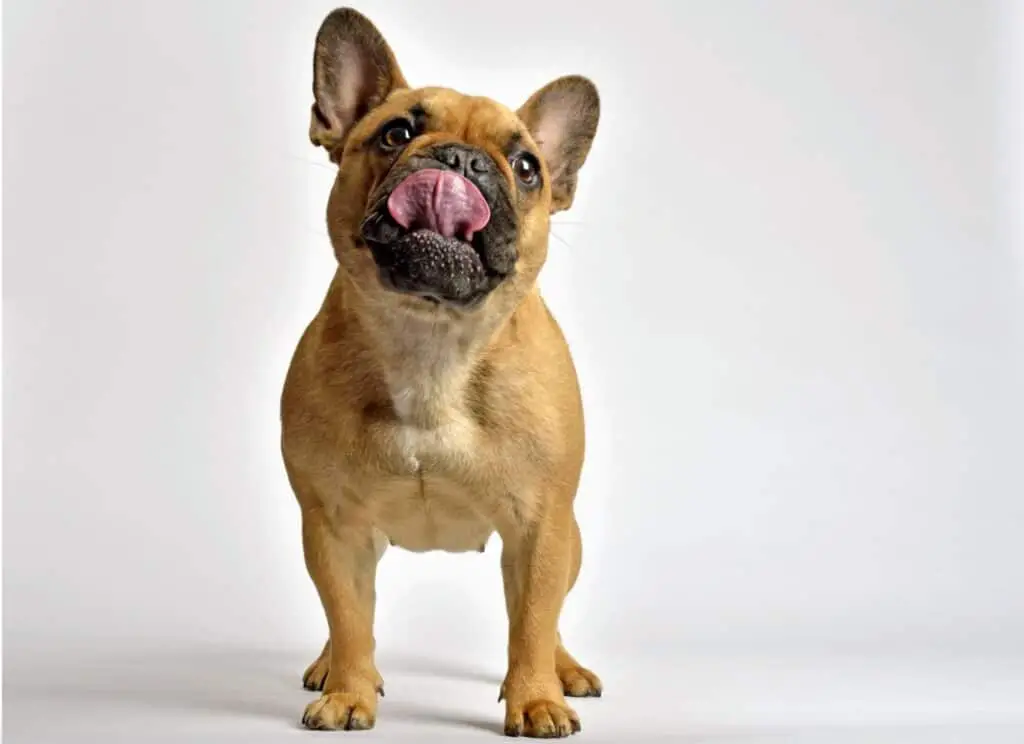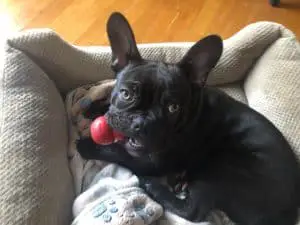The French Bulldog, affectionately called a Frenchie, is well known as a companion breed with a mild temperament that is playful and fun to have around. With their distinctive “bat ear” and compact size, Frenchies are adorable dogs that are loved the world over. Long known as a breed that is easy-going and relatively quiet, their popularity as pet companions that don’t require too much exercise make the ideal for just about any owner, from a city dweller to those with room to roam.
But just like for any pet owner, those that want to undertake French bulldog training need to know the tricks that work best with this unique and amusing breed of dogs. Let’s look at what make the Frenchie special and how owners can harness their distinctive personality to learn how to train French bulldog to shake a paw.
Are Frenchies Really Bulldogs?
With the bulldog title in the breed’s name, potential owners of this dog might be scared away if they have a specific ideal in mind for the larger bulldog breed. The short answer is yes, a French Bulldog is a version of the larger bulldog, but with quite a few notable differences. A few of the key differences between Frenchies and larger bulldogs are:
- Frenchies stand up to 11-13 inches, while Bulldogs can grow to 14-15 inches in height
- Frenchies can weigh up to 28 lbs., while Bulldogs can weigh up to 50 lbs.
- French Bulldogs have so-called bat ears that stand up, while Bulldogs have rose-shaped ears
- Frenchies tend to be fun-loving and companionable, while Bulldogs can be more stubborn if untrained
Easygoing Frenchies – Train Dog To Shake
With their seemingly non-stop smile, French bulldogs look friendly and ready to play at a moment’s notice. Their cheerful personalities shine through as the Frenchie is also known for constantly being on alert but reticent to bark, creating a perfect pet companion in the city.
They are playful and love to please their owners, making them very responsive to training during their early years. A Frenchie is not all play, though, as they are ideal lapdogs due to their size and their tendency to be a little clingy as they do not like to be left alone too often or for too long.
They absolutely love to snuggle with their owners regularly when they are not lighting up a room with their huge personalities. All of these characteristics add up to knowing that French bulldog training that is not only possible, but likely will be very successful and end result in an even better adjusted pet for owners of this personable and adorable dog
How to train French Bulldog to Shake a Paw
With such an agreeable breed, training your dog to do a simple task like shaking their paw is not overly complicated. But the best strategies employ tactics that connect with the inborn traits of a French Bulldog. Let’s look at how specific traits tie into this training method, and how to get your Frenchie to shake hands – err, paws – with you soon!
People-pleasing Frenchies Love Positive Reinforcement
Since this diminutive breed thrives on attention from its owner, your training should begin with a positively reinforced activity and treat combination. This means that the Frenchie will start to connect completing a positive action with a treat.
- Learning to accept a treat gently out of your hand is the first step in teaching your pup how to shake. Have your Frenchie sit in front of you as you hold a treat in your closed fist. Move your hand silently nearby the dog, allowing him to sniff, lick, or otherwise discover the scented treat within your fist.
- When your dog has sufficiently checked out the enclosed hand, open your hand and allow him to eat the treat as you praise him with positive words of affirmation. As you connect the treat with the positive words, your dog will be encouraged and excitedly respond. Some Frenchies grunt and make hilarious noises, but most will not bark.
- Repeat the closed hand, wait, and delivery of the treat a few times, but only opening your hand when the dog paws at it. This process may take a little time as your Frenchie starts to connect his movement with the opening of the hand. Since the dog now knows the closed fist holds the reward of a treat, your pup will likely be persistent in getting to the treat, including all kinds of actions before resorting to pawing at the hand. Each time, stay silent and do not offer any verbal rewards until the pawing action occurs, and then pair verbal praise with the treat reveal.
- Make the task harder by not rewarding verbally or with a treat until they start to hold their paw on your hand for a longer period of time. This step is a little more challenging for both the trainer and the French bulldog because both can show excitement too early in the process, actually slowing down the training success. After a while, the Frenchie will realize that a holding position is the trick to opening the hand to release the treat, and they will comply.
- Next, introduce the “shake” to your dog. Once their paw has remained on your hand for a few seconds, begin to shake your hand while simultaneously using the verbal cue. Repetition of this phase will cement the act of movement with the word “shake,” or whatever term you have chosen, and your dog will continue to comply in anticipation of a treat reward.
- Slowly remove the treat from the equation. Start by delivering the treat with the opposite hand to disconnect the implication of a treat always coming from the “shake” hand. Then, occasionally reward with verbal affirmations instead of treats, allowing the trained task to become one the dog connects to positive praise and an occasional treat rather than a consistent morsel.
Keeping A Good Thing Going – Dog Handshake Progression
Many French bulldog owners find they can take the “shake” a step further by encouraging their dog to raise both paws when requested. This task can be done once the initial shake training is complete by offering a verbal cue to the dog but not offering a treat or reward until the preferred paw is extended. Sometimes using a different hand or a hand that is extended next to the preferred paw is all that it takes for the crafty Frenchie to catch on, but for more stubborn pups a longer training may be in order to achieve this switch-up.
French Bulldogs require your attention!
Giving your Frenchie plenty of attention and praise should be an everyday occurrence for owners of this charming breed. Using their tendency to want to please their owners as a starting point in training is smart, since a happy Frenchie is one that gets plenty of positive reinforcement at home. Your Frenchie will reward you with their characteristic snorts, grunts, and possibly a handshake, if you provide him with a little positive reinforcement and treats along the way.
Author Bio
Cynthia L. Collins is a devoted dog lover, behaviorist and a dog mom to her two rescued Shih Tzus Romeo and Elvis, and an Australian Shepherd, Bandit. She grew up on a farm in Arizona, surrounded by many four-legged companions. When she isn’t working, she volunteers in a local shelter and various animal welfare organizations. She is the main editor of a website: https://smartdoglife.com/
PS – Visit this link to learn how to potty train your French Bulldog




